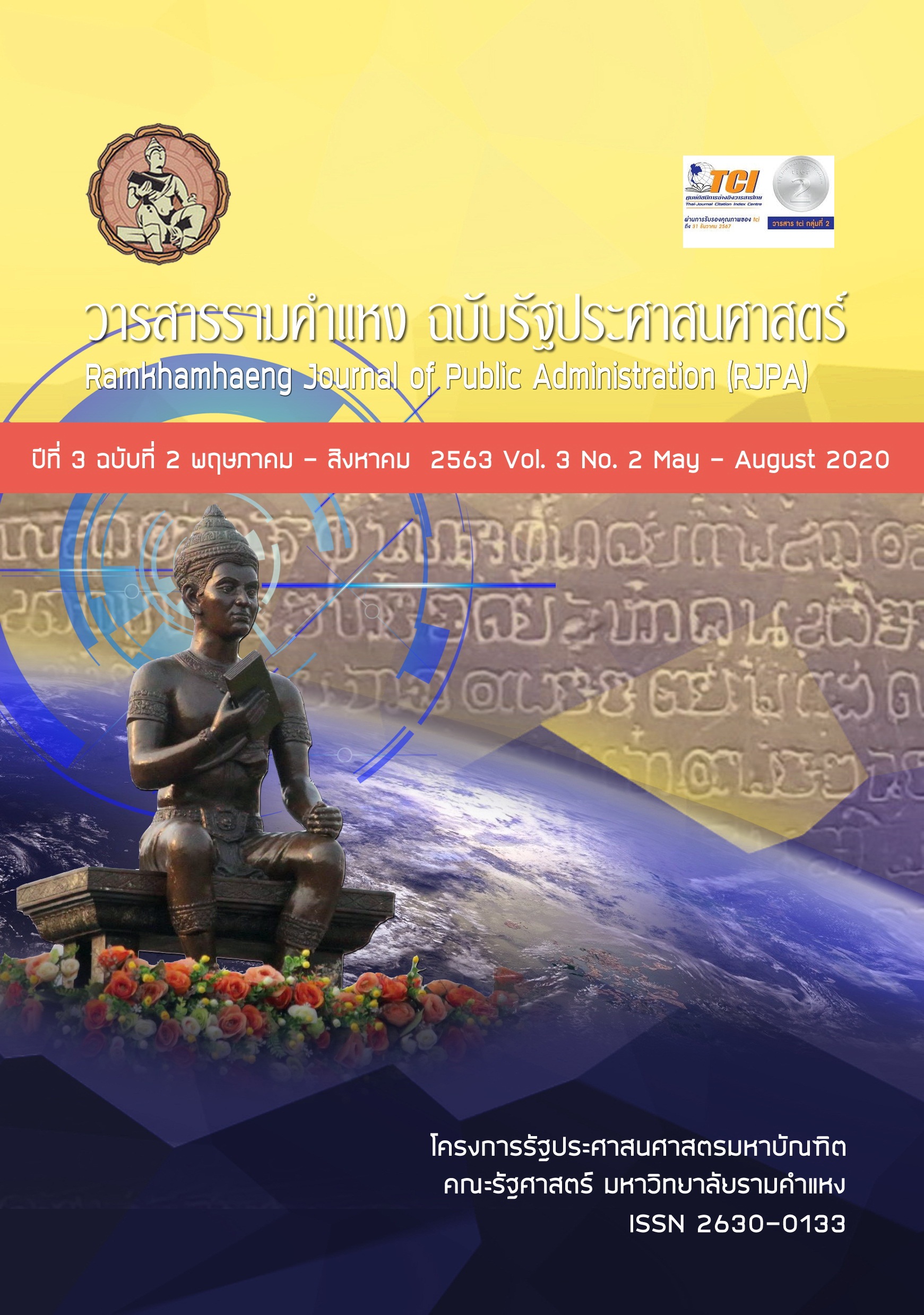การปฏิรูปการบริหารราชการแผ่นดินรัฐไทย (The reform of Thai Goverment Administration)
Abstract
บทคัดย่อ
บทความนี้ มีวัตถุประสงค์ เพื่อนำเสนอการศึกษา การเปลี่ยนแปลงของการบริหารราชการแผ่นดินของรัฐไทย ตั้งแต่รัฐจารีต รัฐสมบูรณาญาสิทธิราชย์ จนถึงรัฐประชาธิปไตยปัจจุบัน และต้องการศึกษาเปรียบเทียบการบริหารราชการแผ่นดินของรัฐไทยกับรัฐต่างประเทศ เพื่อนำมากำหนดรูปแบบการบริหารราชการแผ่นดินของรัฐไทยขึ้นมาใหม่ เพื่อให้สอดคล้องกับรูปแบบการปกครองระบอบประชาธิปไตย
จากการศึกษาการเปลี่ยนแปลงของการบริหารราชการแผ่นดินของรัฐไทยตั้งแต่รัฐจารีต รัฐสมบูรณาญาสิทธิราชย์ และรัฐประชาธิปไตยสมัยคณะราษฎรการจัดการบริหารราชการแผ่นดินของรัฐไทยในแต่ละยุคจะเหมาะสมกับรัฐไทยในแต่ละยุคแต่ละสมัย เมื่อใดที่รัฐไทยเกิดขาดความสมดุล การเปลี่ยนแปลงก็จะเกิดขึ้น จากการที่การบริหารราชการแผ่นดินของรัฐไทยในปัจจุบัน เริ่มขาดความสมดุล และไม่สอดคล้องกับสภาวการณ์ปัจจุบัน ทำให้เกิดการบริหารงานของรัฐที่ซ้ำซ้อน ล่าช้า ขาดประสิทธิภาพ ไม่สนองตอบต่อความต้องการของประชาชน และไม่สอดคล้องกับหลักการประชาธิปไตย โดยเฉพาะอย่างยิ่งระบบราชการแบบรวมศูนย์หรือรัฐราชการกลับกลายเป็นอุปสรรคของการบริหารราชการแผ่นดิน ทำให้การบริหารราชการแผ่นดินของรัฐในปัจจุบันไม่อาจจะแก้ปัญหาต่างๆ ได้โดยเฉพาะการบริหารราชการส่วนกลางกับส่วนภูมิภาค
บทความนี้เป็นการนำเสนอการจัดรูปแบบการบริหารราชการแผ่นดินใหม่ โดยยึดเอาประชาชนเป็นศูนย์กลาง จัดการกระจายอำนาจสู่ท้องถิ่น และออกแบบโครงสร้างการบริหารราชการแผ่นดินใหม่ที่ส่วนกลางและสวนท้องถิ่นมีความสอดคล้องกัน โดยยกเลิกราชการส่วนภูมิภาค (จังหวัด) ออกไป แล้วนำกลุ่มจังหวัดมาปรับเป็นมณฑลเพื่อเป็นตัวเชื่อมโยงกับรัฐส่วนกลางกับส่วนท้องถิ่นในด้านนโยบาย โดยให้มีรัฐมนตรีประจำมณฑล และให้นายกองค์การบริหารส่วนเขต (จังหวัด) ในมณฑลมาทำหน้าที่เป็นคณะกรรมการบริหารมณฑล (Board) โดยตำแหน่งเพื่อให้การจัดนโยบายสอดคล้องในพื้นที่ เพราะนโยบายจะเกิดทั้งจากบนสู่ล่าง (Top-Down) และล่างสู่บน (Bottom-up) จะทำให้ส่วนกลาง มณฑลและท้องถิ่นมีความเชื่อมโยงกับประชาชนอย่างแท้จริง มีความสอดคล้องกันอย่างสมดุล ตามหลักการปกครองระบอบประชาธิปไตย
Abstract
The objective of this article is to present the study of the transition of Thai government administration from conservative state, absolute state to democratic state and the comparison between Thai government administration with those of other countries, in order to establish a consistent new Thai government administration that conform to democracy.
The transition of Thai state government administration from conservative state, absolute state and democratic state during Khana Ratsadon regime, in each period created a new balance and when there is a lack of balance, change will occur. Currently, Thai government administration faced imbalance and was inconsistent with current conditions which caused redundant, delayed, ineffective state administration, not responding to people’s needs and not in line with the principle of democracy. Especially, the centralized bureaucracy in the bureaucratic state became an obstacle to the administration of the country. It caused the current government administration not to be able to solve various problems, especially the provincial administration which also caused duplication affect delay, leakage, inefficiency and failure.
This research proposed a new reformation of Thai government administration by people centered, decentralization and establish a central and consistent local authority structure. The repeal provincial administration and establish new counties and ministers, linkage the central state and local government by policy. The county executive board consist of the county ministers and the chief executive of the provincial administrative organizations act as the board of governor in the position to make the policy alignment in the area that the central administration, county and local administration connect to people and make sure that policy occurred from top to bottom and bottom to top is consistent balance in according to the principle of democracy.




 Publication Policy (นโยบายการตีพิมพ์บทความ)
Publication Policy (นโยบายการตีพิมพ์บทความ) Publication Ethics (จริยธรรมการตีพิมพ์บทความ)
Publication Ethics (จริยธรรมการตีพิมพ์บทความ)